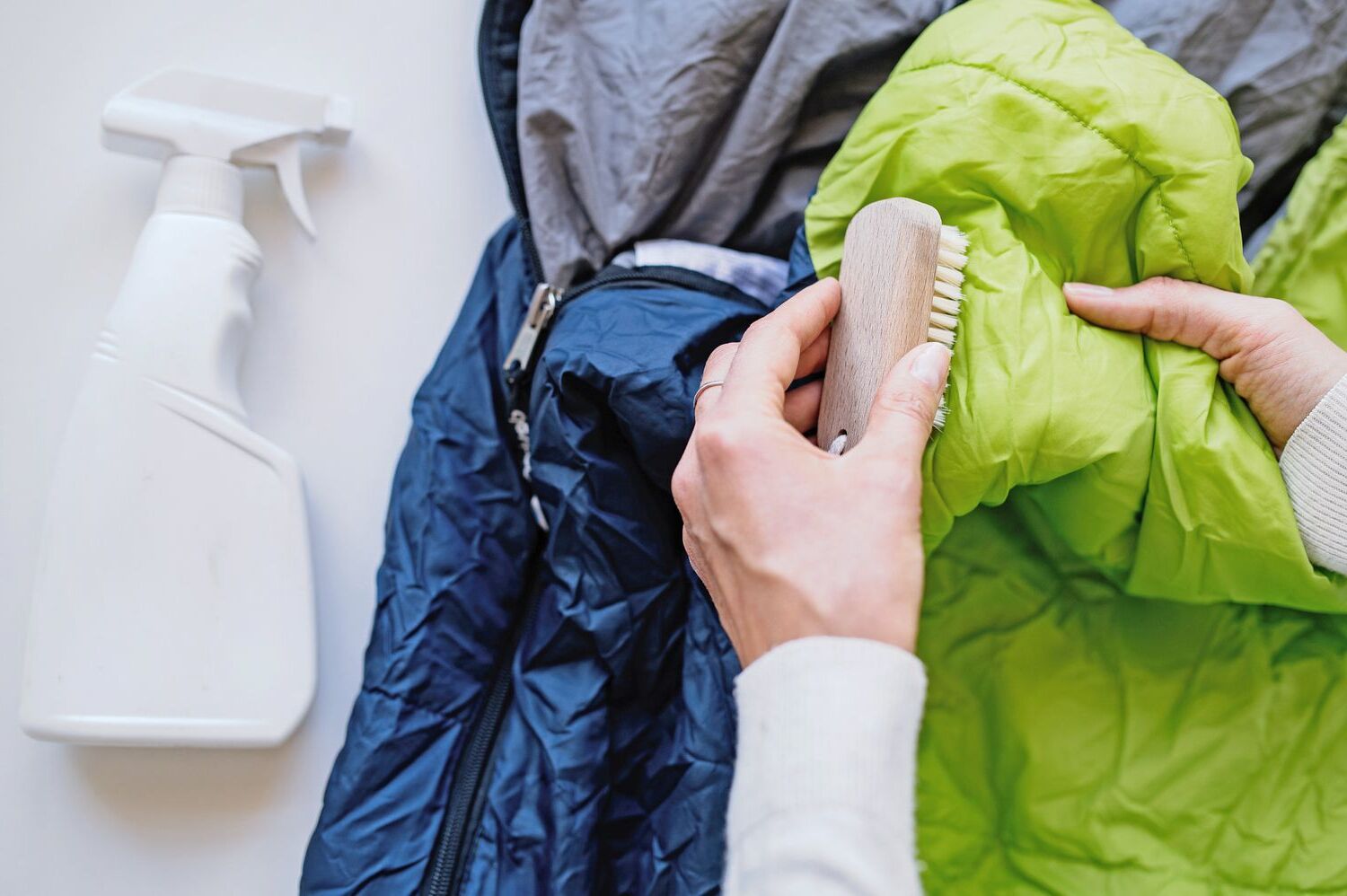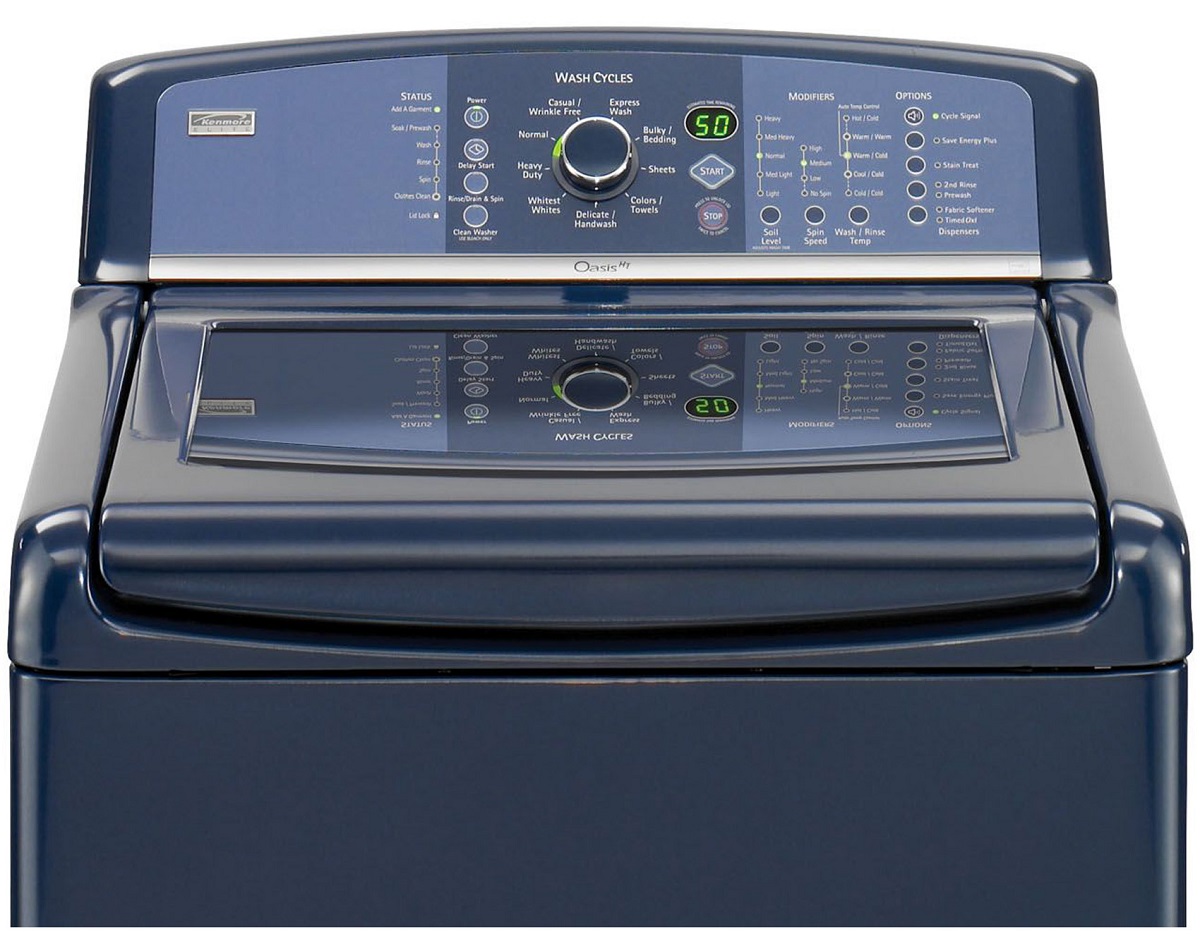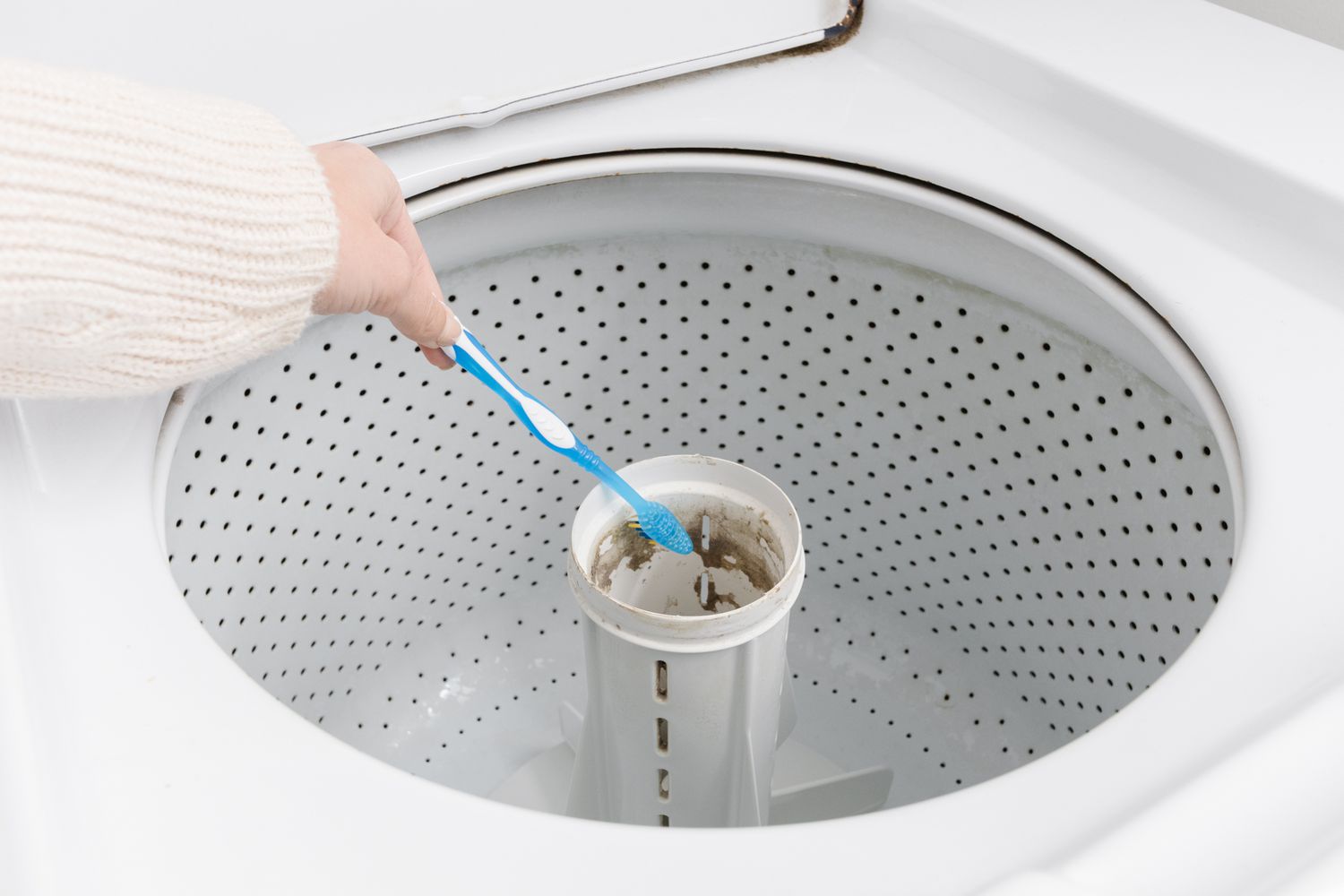Home>Home Appliances>Laundry Appliances>How To Wash A Sleeping Bag In A Washing Machine


Laundry Appliances
How To Wash A Sleeping Bag In A Washing Machine
Published: February 21, 2024
Learn how to properly wash a sleeping bag in a washing machine with our expert laundry appliance tips. Keep your sleeping bag clean and fresh for your next adventure.
(Many of the links in this article redirect to a specific reviewed product. Your purchase of these products through affiliate links helps to generate commission for Storables.com, at no extra cost. Learn more)
Introduction
Washing a sleeping bag may seem like a daunting task, but with the right approach, it can be a straightforward and rewarding process. Whether you've returned from a camping trip or simply want to freshen up your sleeping bag, knowing how to properly clean it is essential for maintaining its quality and ensuring a comfortable night's sleep. By following a few simple steps and using the appropriate cleaning techniques, you can effectively wash your sleeping bag in a washing machine without compromising its insulation or durability.
A clean sleeping bag not only provides a more pleasant sleeping experience but also helps to prolong its lifespan. Over time, dirt, body oils, and other contaminants can accumulate in the fabric, leading to unpleasant odors and a decrease in insulation performance. By incorporating regular cleaning into your gear maintenance routine, you can extend the longevity of your sleeping bag and preserve its loft and warmth.
In this comprehensive guide, we will walk you through the step-by-step process of washing a sleeping bag in a washing machine. From preparing the sleeping bag for washing to selecting the right detergent and setting the washing machine, we'll cover everything you need to know to ensure a successful cleaning experience. Additionally, we'll provide valuable tips for properly drying and maintaining your sleeping bag, helping you keep it in top condition for many adventures to come.
With the knowledge and confidence gained from this guide, you'll be well-equipped to tackle the task of washing your sleeping bag, allowing you to enjoy a fresh and cozy sleeping environment on your next outdoor excursion. Let's dive into the details of preparing and washing your sleeping bag to keep it clean, comfortable, and ready for your next outdoor adventure.
Key Takeaways:
- Keep your sleeping bag clean and cozy by following these steps: Check the care label, empty pockets, close zippers, spot treat stains, and fluff insulation before washing. Use a gentle cycle and mild detergent to maintain its quality.
- Maintain your sleeping bag’s longevity by air drying it flat, storing it uncompressed, and spot cleaning stains promptly. Avoid eating inside and consider using a liner for added protection. Regular maintenance reduces the need for frequent intensive cleaning.
Read more: How To Store A Down Sleeping Bag
Preparing the Sleeping Bag
Before you begin the process of washing your sleeping bag, it's essential to prepare it properly to ensure a thorough and effective cleaning. Here's a detailed breakdown of the steps involved in preparing your sleeping bag for washing:
-
Check the Care Label: The first step in preparing your sleeping bag for washing is to carefully review the care label attached to the bag. The care label provides valuable information regarding the manufacturer's recommended cleaning instructions, including water temperature, detergent type, and any specific precautions to be aware of. By following the guidelines outlined on the care label, you can avoid potential damage to the sleeping bag and maintain its performance.
-
Empty the Pockets: If your sleeping bag features any external or internal pockets, be sure to empty them of any items such as small gear, snacks, or personal belongings. Clearing out the pockets helps prevent damage to the fabric and ensures that the washing process is focused solely on cleaning the sleeping bag itself.
-
Close Zippers and Fastenings: Before placing the sleeping bag in the washing machine, it's important to close all zippers and fasten any Velcro or snap closures. This step helps prevent the zippers from snagging on the fabric or other items during the washing cycle, reducing the risk of damage to the sleeping bag's construction.
-
Spot Treat Stains: If your sleeping bag has noticeable stains or soiled areas, consider spot treating them before washing. Use a gentle stain remover or a mild detergent to target specific areas of concern, gently working the cleaning solution into the fabric with a soft brush or cloth. Allow the spot treatment to sit for a few minutes before proceeding to the washing stage.
-
Loosen Clumped Insulation: Over time, the insulation inside a sleeping bag may become compacted or clumped together, affecting its loft and warmth-retaining properties. Before washing, take a few moments to gently shake and fluff the sleeping bag, redistributing the insulation to ensure an even and consistent fill throughout the bag.
By meticulously preparing your sleeping bag for washing, you can set the stage for a successful cleaning process and help maintain the integrity and performance of your outdoor gear. With these preparatory steps completed, you're now ready to proceed with loading the sleeping bag into the washing machine for a thorough and refreshing cleanse.
Loading the Sleeping Bag into the Washing Machine
Loading your sleeping bag into the washing machine requires careful attention to ensure that the cleaning process is thorough and gentle on the fabric and insulation. Here's a detailed guide on how to properly load your sleeping bag into the washing machine:
-
Select the Right Washing Machine: Before proceeding, ensure that the washing machine you plan to use is large enough to accommodate the sleeping bag without overcrowding. An overcrowded washing machine can lead to ineffective cleaning and potential damage to the sleeping bag's construction. If possible, opt for a front-loading washing machine, as it tends to be gentler on outdoor gear compared to top-loading machines.
-
Use a Mesh Laundry Bag (Optional): To provide an extra layer of protection for your sleeping bag, consider placing it inside a mesh laundry bag before loading it into the washing machine. The mesh bag helps minimize friction and agitation during the washing cycle, reducing the risk of abrasion and wear on the sleeping bag's fabric and insulation.
-
Load the Sleeping Bag Carefully: Lay the sleeping bag flat in the washing machine, ensuring that it is evenly distributed to promote balanced cleaning and prevent excessive agitation. Avoid folding or cramming the sleeping bag, as this can lead to uneven cleaning and potential damage to the insulation. If you're washing multiple sleeping bags simultaneously, be mindful of maintaining adequate space between each item to allow for proper circulation of water and detergent.
-
Add Mild Detergent: Once the sleeping bag is positioned in the washing machine, add a small amount of mild, non-detergent soap specifically designed for washing outdoor gear. Avoid using regular laundry detergents, as they may contain harsh chemicals that can compromise the sleeping bag's performance and water-repellent properties. Be cautious not to overuse detergent, as excessive suds can be difficult to rinse out thoroughly.
-
Select a Gentle Cycle: Choose a gentle or delicate washing cycle with a cold or lukewarm water setting to minimize the impact on the sleeping bag's fabric and insulation. Avoid using hot water, as it can cause damage to the synthetic or down fill and may lead to excessive shrinkage or loss of loft.
By following these steps, you can ensure that your sleeping bag is loaded into the washing machine in a manner that promotes effective cleaning while safeguarding its structural integrity and insulation. With the sleeping bag securely positioned in the washing machine, you're ready to proceed to the next stage of the cleaning process, which involves selecting the right detergent for optimal results.
Choosing the Right Detergent
Selecting the appropriate detergent is a critical aspect of washing a sleeping bag, as it directly impacts the cleanliness, performance, and longevity of the outdoor gear. When it comes to choosing the right detergent for washing a sleeping bag, it's essential to prioritize gentle, non-detergent soaps specifically formulated for outdoor and technical fabrics. These specialized detergents are designed to effectively cleanse the fabric and insulation while preserving their water-repellent and insulating properties.
One of the key considerations when selecting a detergent is to opt for a product that is free from harsh chemicals, optical brighteners, and fabric softeners. Harsh chemicals and additives can compromise the sleeping bag's fabric integrity and water-repellent finish, potentially leading to reduced insulation performance and durability. Additionally, optical brighteners and fabric softeners can leave residues that may interfere with the sleeping bag's breathability and loft, impacting its overall comfort and thermal efficiency.
Look for detergents specifically labeled as suitable for technical and performance fabrics, as they are formulated to effectively remove dirt, oils, and odors without leaving behind any detrimental residues. These detergents are often biodegradable and environmentally friendly, aligning with sustainable outdoor practices while ensuring a thorough and gentle cleaning process for your sleeping bag.
Furthermore, consider choosing a detergent that is compatible with both synthetic and down-filled sleeping bags, as the cleaning requirements for these materials can vary. Some detergents are designed to cater to the specific needs of down insulation, effectively cleansing and restoring its loft without causing clumping or damage. By selecting a detergent tailored to the type of insulation in your sleeping bag, you can optimize the cleaning process and maintain the loft and warmth-retaining properties of the insulation.
In summary, when choosing the right detergent for washing a sleeping bag, prioritize gentle, non-detergent soaps specifically formulated for outdoor and technical fabrics. Look for products free from harsh chemicals, optical brighteners, and fabric softeners, and opt for detergents labeled as suitable for both synthetic and down-filled sleeping bags. By selecting a detergent that aligns with these criteria, you can ensure a thorough and effective cleaning process while safeguarding the performance and longevity of your sleeping bag.
Setting the Washing Machine
Setting the washing machine for cleaning a sleeping bag involves crucial considerations to ensure a gentle yet thorough cleaning process. By following the appropriate settings, you can effectively cleanse the sleeping bag while minimizing the risk of damage to its fabric and insulation. Here's a detailed guide on how to set the washing machine for washing a sleeping bag:
Read more: How To Store Sleeping Bags In Garage
Water Temperature:
Selecting the right water temperature is essential for preserving the integrity of the sleeping bag's fabric and insulation. Opt for a cold or lukewarm water setting to prevent potential damage to synthetic or down fill. Hot water can lead to excessive shrinkage, loss of loft, and compromise the performance of the insulation. By using cooler water, you can effectively remove dirt and oils while maintaining the structural and thermal properties of the sleeping bag.
Agitation Level:
Choose a washing cycle with a gentle or delicate agitation setting to minimize stress on the sleeping bag's fabric and insulation. Excessive agitation can cause friction and abrasion, potentially leading to premature wear and tear. By opting for a gentle cycle, you can ensure that the cleaning process is thorough yet gentle, promoting the longevity of the sleeping bag.
Spin Speed:
When setting the washing machine, select a low or medium spin speed to prevent excessive stress on the sleeping bag during the draining and spinning phases of the cycle. High spin speeds can place undue pressure on the fabric and insulation, potentially causing damage or misshaping the sleeping bag. By using a lower spin speed, you can safeguard the structural integrity of the sleeping bag while effectively removing excess water.
Additional Rinse Cycle:
Consider adding an extra rinse cycle to ensure that all detergent residues are thoroughly removed from the sleeping bag. Lingering detergent residues can impact the fabric's breathability and water-repellent properties, potentially compromising the sleeping bag's performance. An additional rinse cycle helps to eliminate any remaining detergent, promoting a clean and residue-free outcome.
By carefully adjusting the washing machine settings to align with these considerations, you can create an optimal environment for washing your sleeping bag. These settings prioritize a gentle yet effective cleaning process, allowing you to maintain the quality and performance of your outdoor gear. With the washing machine properly set, you're ready to initiate the cleaning cycle and rejuvenate your sleeping bag for future adventures.
Read also: 8 Amazing Washer Bag For 2025
Drying the Sleeping Bag
After the washing cycle is complete, the next crucial step in the sleeping bag cleaning process is ensuring thorough and proper drying. Drying the sleeping bag effectively is essential for maintaining its loft, insulation, and overall performance. Here's a detailed guide on how to approach the drying process to preserve the quality of your sleeping bag.
Air Drying Method:
One of the most recommended approaches for drying a sleeping bag is air drying. Lay the clean sleeping bag flat on a clean, dry surface, ensuring that it is evenly spread out to promote consistent drying. Avoid hanging the sleeping bag by its loops or cords, as this can lead to stretching and distortion of the fabric and insulation. Additionally, direct exposure to sunlight for extended periods should be avoided, as it can cause fading and damage to the fabric and fill material.
Fluffing and Turning:
Throughout the air drying process, periodically fluff and turn the sleeping bag to facilitate even drying and prevent clumping of the insulation. Gently shake and massage the sleeping bag to redistribute the fill and restore its loft. This practice helps maintain the insulation's effectiveness and ensures that the sleeping bag retains its warmth-retaining properties.
Ventilated Area:
Place the sleeping bag in a well-ventilated area with good air circulation to expedite the drying process. Adequate airflow aids in removing moisture from the fabric and insulation, promoting a thorough and efficient drying outcome. It's important to avoid confined or damp spaces, as they can hinder the drying process and lead to musty odors or mildew growth.
Read also: 14 Best Sleeping Bag Storage Sack For 2025
Patience:
Allow sufficient time for the sleeping bag to air dry completely. Depending on the environmental conditions, the drying process may take several hours to a day or more. It's essential to exercise patience and resist the temptation to expedite the drying process using artificial heat sources, as excessive heat can damage the fabric and insulation, compromising the sleeping bag's performance.
By following these guidelines for drying your sleeping bag, you can ensure that it retains its loft, insulation, and overall quality. Proper drying practices contribute to the longevity of the sleeping bag, allowing you to continue enjoying its comfort and performance on your outdoor adventures. With the sleeping bag thoroughly dried, it's ready to be stored or used for your next memorable outdoor experience.
Tips for Maintaining the Sleeping Bag
Proper maintenance is essential for preserving the quality and longevity of your sleeping bag, ensuring that it continues to provide comfort and insulation on your outdoor excursions. Here are valuable tips for maintaining your sleeping bag:
-
Storage: When not in use, store your sleeping bag in a large, breathable storage sack or a cotton storage bag to prevent compression of the insulation. Avoid prolonged storage in a compressed state, as it can lead to loss of loft and insulation effectiveness. Additionally, store the sleeping bag in a cool, dry place away from direct sunlight and moisture to prevent mildew and odors.
-
Spot Cleaning: Address minor stains or soiled areas promptly by spot cleaning with a gentle detergent and water. Use a soft brush or cloth to gently work the cleaning solution into the affected areas, then allow the sleeping bag to air dry thoroughly. Prompt spot cleaning helps prevent the need for more extensive washing and preserves the overall cleanliness of the sleeping bag.
-
Air Out After Use: After each outdoor adventure, air out your sleeping bag to remove any accumulated moisture and odors. Hang the sleeping bag in a well-ventilated area or lay it flat to allow air circulation, aiding in the evaporation of sweat and moisture. This practice helps maintain the freshness of the sleeping bag and prevents the development of musty odors.
-
Avoid Eating Inside: While it may be tempting to snack or eat inside your sleeping bag, it's best to avoid doing so to prevent food crumbs and spills. Food residues can attract pests and lead to unpleasant odors, requiring more frequent cleaning. Enjoy meals outside of the sleeping bag to keep it clean and free from potential stains and odors.
-
Use a Liner: Consider using a sleeping bag liner to provide an additional layer of protection against body oils, dirt, and sweat. A liner helps minimize direct contact between your body and the sleeping bag, reducing the frequency of washing while preserving its cleanliness. Liners are also easier to clean and maintain, extending the intervals between thorough sleeping bag washings.
-
Professional Cleaning: For down-filled sleeping bags, consider professional cleaning services specifically tailored to outdoor gear. Professional cleaning can effectively remove dirt and oils while rejuvenating the loft and insulation of the sleeping bag. Ensure that the cleaning service is experienced in handling technical outdoor gear to maintain the sleeping bag's performance.
By incorporating these maintenance tips into your sleeping bag care routine, you can prolong its lifespan, maintain its insulation properties, and ensure that it continues to provide a cozy and comfortable sleeping environment during your outdoor adventures. Regular maintenance not only preserves the quality of the sleeping bag but also minimizes the need for frequent intensive cleaning, allowing you to focus on enjoying your outdoor experiences to the fullest.
Frequently Asked Questions about How To Wash A Sleeping Bag In A Washing Machine
Was this page helpful?
At Storables.com, we guarantee accurate and reliable information. Our content, validated by Expert Board Contributors, is crafted following stringent Editorial Policies. We're committed to providing you with well-researched, expert-backed insights for all your informational needs.













0 thoughts on “How To Wash A Sleeping Bag In A Washing Machine”